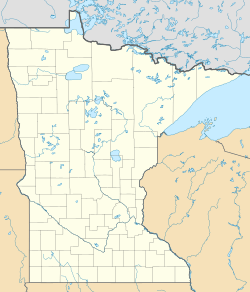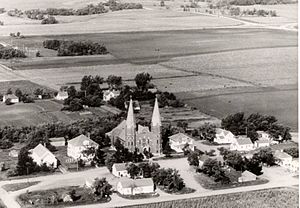Wilno, Minnesota facts for kids
Quick facts for kids
Wilno, Minnesota
|
|
|---|---|
| Country | United States |
| State | Minnesota |
| County | Lincoln |
| Township | Royal |
| Elevation | 1,677 ft (511 m) |
| Time zone | UTC-6 (Central (CST)) |
| • Summer (DST) | UTC-5 (CDT) |
| ZIP code |
56142
|
| Area code(s) | 507 |
| GNIS feature ID | 654217 |
Wilno is a small, unincorporated community located in Royal Township, within Lincoln County, Minnesota, in the United States. An unincorporated community is a place that doesn't have its own local government, but it still has a name and people living there.
Contents
History of Wilno
Wilno was started in 1883. The Chicago and Northwestern railroad helped set aside land for a new Polish settlement. This was a planned effort between the railroad and leaders of the Polish National Alliance (PNA). The PNA was a group that helped Polish immigrants in America. The Catholic Church also worked with them.
How Wilno Got Its Name
The people who planned the town named it after a city in Poland called Vilnius. They used its Polish name, Wilno. This helped new Polish families feel at home.
Early Days of the Community
In the same year Wilno was founded, St. John Cantius Church was built. Reverend R. Byzewski and Bishop John Ireland helped create the church. By 1891, the church and a school were the heart of the town.
Wilno also had many important businesses for its size:
- A post office
- A carpenter's shop
- A blacksmith's shop
- A general store
- A saloon
- A wagonmaker's shop
The person who ran the post office also had a small reading room. This was a place where people could read books and newspapers.
The Railroad Myth
There's a common story that the railroad didn't go through Wilno because two farmers refused to sell their land. However, this is just a myth. Railroads often bypassed smaller towns like Wilno. Instead, the railroad went through what became the town of Ivanhoe. Wilno stayed a small Catholic community.
Wilno Today
In 1983, the St. John Cantius Church celebrated its 100th birthday. At that time, Wilno was still a very small place. It had the church, two stores, and about 10 homes. Even today, Wilno remains a quiet, close-knit community.




